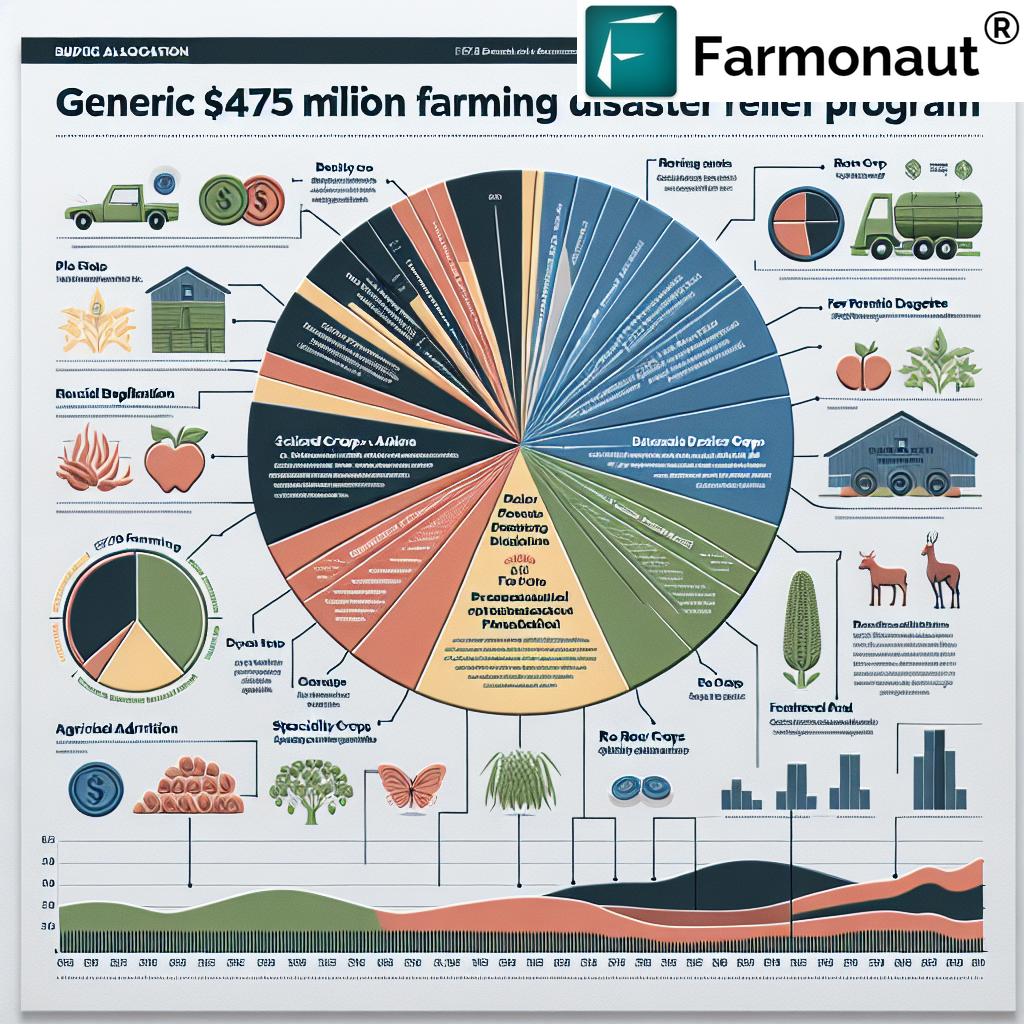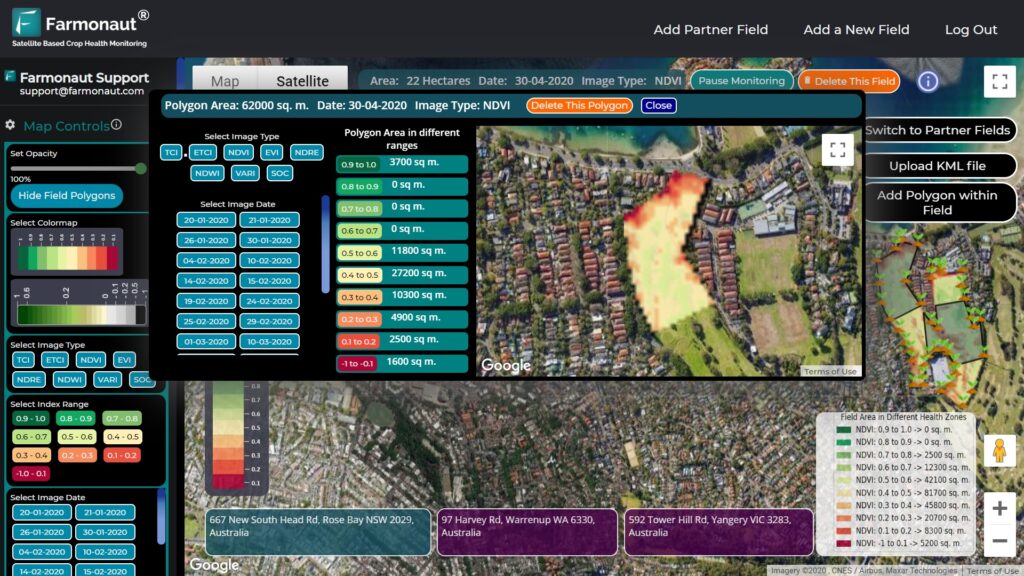North Carolina’s $475 Million Crop Disaster Relief Program: 2024 Agricultural Assistance Unveiled
“North Carolina’s agriculture and agribusiness sector has a $111.1 billion economic impact on the state.”
As we delve into the details of North Carolina’s groundbreaking 2024 Agricultural Disaster Crop Loss Program, it’s crucial to understand the significant impact that agriculture has on our state’s economy. This program represents a monumental step in supporting our farming community, which forms the backbone of North Carolina’s economic strength.
Understanding the 2024 Agricultural Disaster Crop Loss Program
The North Carolina General Assembly has taken a decisive step to address the severe crop losses experienced by farmers due to Hurricane Helene and other natural disasters. House Bill 130, filed by the General Assembly House, aims to establish the 2024 Agricultural Disaster Crop Loss Program, recognizing the critical importance of the state’s $111.1 billion agricultural and agribusiness economic impact.
This comprehensive program is designed to provide much-needed financial assistance to farmers who have suffered verifiable crop losses in 2024. Let’s break down the key components of this crucial initiative:
- Funding Allocation: A total of $475 million has been earmarked for this program.
- Eligibility: Farmers with crops planted but not harvested by January 1, 2024, are eligible for assistance.
- Documentation: Farmers must submit required documentation within 30 days of the bill’s passage, with a possible 30-day extension for certain specialty crops.
- Administration: The North Carolina Department of Agriculture and Consumer Services will oversee the program.
- Calculation Method: Assistance will be calculated using county and state averages for yields and prices.
- Program Duration: The program is set to expire 30 months after becoming law.
This initiative demonstrates North Carolina’s commitment to supporting its agricultural sector in the face of increasingly challenging climate-related events.

The Economic Impact of Agriculture in North Carolina
Before we dive deeper into the program details, it’s essential to understand the immense economic significance of agriculture and agribusiness in North Carolina. With a staggering $111.1 billion impact, this sector is a vital pillar of the state’s economy. This program’s introduction underscores the state’s recognition of agriculture’s critical role and the need to protect and support this industry.
The 2024 Agricultural Disaster Crop Loss Program is not just about immediate relief; it’s an investment in the state’s economic future. By providing support to farmers affected by natural disasters, North Carolina is safeguarding its agricultural output, preserving jobs, and maintaining its position as a key player in the national agricultural landscape.
Disasters Covered and Their Impact
The program addresses a wide range of natural disasters that have affected North Carolina’s agricultural sector in 2024. These include:
- Hurricane Helene
- Drought conditions
- Excessive rainfall
- Tropical storms
It’s worth noting that every county in North Carolina was included in at least one U.S. Department of Agriculture disaster declaration in 2024. This widespread impact highlights the urgent need for a comprehensive disaster relief program for our agricultural community.
Eligibility Criteria and Application Process
To ensure that assistance reaches those who need it most, the program has established clear eligibility criteria:
- Crops must have been planted but not harvested by January 1, 2024
- Farmers must provide verifiable evidence of crop losses
- Documentation must be submitted within 30 days of the bill’s passage
- A 30-day extension is possible for certain specialty crops
The application process is designed to be straightforward yet thorough. Farmers will need to compile and submit documentation that clearly demonstrates their crop losses. This may include:
- Planting records
- Harvest data (if any)
- Insurance claims related to crop losses
- Photographic evidence of crop damage
- Any other relevant documentation that supports the claim
We recommend that farmers begin gathering this information as soon as possible to ensure a smooth application process once the program is officially launched.
Funding Sources and Allocation
The $475 million allocated for this program comes from various state reserves, demonstrating North Carolina’s commitment to agricultural relief. Here’s a breakdown of the funding sources:
- $200 million transferred from the Stabilization and Inflation Reserve
- $200 million transferred from the Information Technology Reserve
- $75 million transferred from the Economic Development Project Reserve
This diverse funding approach ensures that the program has a solid financial foundation without overly burdening any single state fund. It’s a testament to the state’s prioritization of agricultural disaster relief and its recognition of the sector’s importance to North Carolina’s overall economic health.
“The 2024 Agricultural Disaster Crop Loss Program in North Carolina allocates $475 million for farmer relief.”
Program Administration and Calculation of Assistance
The North Carolina Department of Agriculture and Consumer Services will be at the helm of this crucial program. Their expertise in agricultural matters makes them the ideal agency to oversee the distribution of funds and ensure that assistance reaches eligible farmers efficiently.
One of the key aspects of the program is how assistance will be calculated. The department will use county and state averages for yields and prices to determine the level of assistance for each eligible farmer. This approach aims to provide fair and equitable support across different regions and crop types.
Factors that will likely be considered in the calculation include:
- Historical yield data for specific crops in each county
- Current market prices for affected crops
- Extent of crop damage or loss
- Total acreage affected
This data-driven approach ensures that the assistance provided is proportional to the losses incurred, taking into account regional variations in agricultural productivity and market conditions.

Impact on Different Agricultural Sectors
The 2024 Agricultural Disaster Crop Loss Program is designed to support a wide range of agricultural sectors affected by natural disasters. While the program doesn’t discriminate between crop types, it’s worth considering how different sectors might benefit:
- Row Crops: Farmers growing corn, soybeans, cotton, and other row crops often face significant risks from hurricanes and excessive rainfall. This program could provide crucial support for these large-scale operations.
- Specialty Crops: North Carolina’s diverse climate supports a variety of specialty crops, including sweet potatoes, tobacco, and various fruits. The program’s provision for a 30-day extension on documentation for specialty crops recognizes the unique challenges these farmers face.
- Livestock and Poultry: While the program primarily focuses on crop losses, farmers who grow feed crops for their livestock operations could also benefit.
- Organic Farms: Organic farmers, who often face higher production costs, could find this assistance particularly helpful in recovering from disaster-related losses.
By providing support across these diverse sectors, the program aims to maintain the overall health and diversity of North Carolina’s agricultural landscape.
Long-term Benefits and Economic Implications
While the 2024 Agricultural Disaster Crop Loss Program provides immediate relief to farmers, its benefits extend far beyond the short term. Let’s explore some of the long-term economic implications of this initiative:
- Maintaining Agricultural Output: By helping farmers recover from crop losses, the program ensures that North Carolina can maintain its agricultural production levels, preserving its position in national and international markets.
- Job Preservation: Agriculture is a significant employer in North Carolina. By supporting farms through difficult times, the program helps preserve jobs not just on farms, but also in related industries such as food processing and transportation.
- Rural Economic Stability: Many of North Carolina’s rural communities depend heavily on agriculture. This program helps maintain the economic stability of these areas, preventing potential population loss and preserving local businesses.
- Investment in Future Resilience: The financial support provided can allow farmers to invest in more resilient farming practices or infrastructure, potentially reducing the impact of future natural disasters.
- Food Security: By ensuring that farmers can continue operating despite setbacks, the program contributes to regional and national food security.
These long-term benefits underscore the importance of the program not just as a relief measure, but as a strategic investment in North Carolina’s agricultural future.
Collaboration and Support
The success of the 2024 Agricultural Disaster Crop Loss Program will depend on collaboration between various stakeholders. While the Department of Agriculture and Consumer Services is at the forefront of administration, support from other entities will be crucial:
- Local Extension Offices: These offices can play a vital role in helping farmers understand the program and assist with the application process.
- Agricultural Associations: Organizations representing various agricultural sectors can help disseminate information and provide sector-specific guidance to their members.
- Financial Institutions: Banks and credit unions familiar with agricultural lending can assist farmers in navigating the financial aspects of the program.
- Technology Providers: Companies offering farm management solutions can help farmers compile the necessary documentation for their applications.
This collaborative approach ensures that farmers have access to a network of support as they navigate the disaster relief process.
Technological Support for Farmers
In today’s digital age, technology plays a crucial role in modern agriculture, especially in times of crisis. Innovative solutions can help farmers better manage their operations, document losses, and streamline the application process for disaster relief programs.
One such solution is Farmonaut, a pioneering agricultural technology company that offers advanced, satellite-based farm management solutions. While not directly affiliated with the North Carolina disaster relief program, tools like Farmonaut can be invaluable for farmers in documenting crop health, monitoring field conditions, and maintaining accurate records.
Here are some ways technology can support farmers in the context of disaster relief:
- Satellite-Based Crop Monitoring: Regular satellite imagery can provide a clear timeline of crop health before and after a disaster event.
- Data-Driven Insights: AI-powered advisory systems can help farmers make informed decisions about crop management in the aftermath of a disaster.
- Digital Record-Keeping: Farm management apps allow for easy documentation of planting, crop health, and harvest data – all crucial for disaster relief applications.
- Weather Forecasting: Advanced weather prediction tools can help farmers prepare for potential disasters and mitigate risks.
While these technologies are not a requirement for the North Carolina program, they represent valuable tools that can support farmers in managing their operations and preparing for future challenges.
Satellite API | API Developer Docs
Preparing for Future Challenges
While the 2024 Agricultural Disaster Crop Loss Program addresses immediate needs, it’s also important to look ahead and consider how North Carolina can better prepare for future agricultural challenges. Here are some areas that merit attention:
- Climate-Resilient Farming Practices: Encouraging the adoption of farming techniques that can withstand extreme weather events.
- Diversification of Crops: Supporting farmers in diversifying their crop portfolios to spread risk.
- Investment in Infrastructure: Improving irrigation systems, drainage, and other farm infrastructure to mitigate the impact of weather extremes.
- Research and Development: Investing in the development of drought-resistant and flood-tolerant crop varieties.
- Education and Training: Providing farmers with ongoing education on risk management and disaster preparedness.
By focusing on these areas, North Carolina can work towards building a more resilient agricultural sector that’s better equipped to face future challenges.
North Carolina 2024 Agricultural Disaster Crop Loss Program Overview
| Program Details | Eligibility Criteria | Covered Disasters | Documentation Requirements | Assistance Calculation Method | Economic Impact | Administering Body |
|---|---|---|---|---|---|---|
| $475 million funding for crop loss assistance | Crops planted but not harvested by Jan 1, 2024 | Hurricane Helene, drought, excessive rainfall, tropical storms | Submission within 30 days of bill passage (30-day extension for specialty crops) | Based on county and state averages for yields and prices | $111.1 billion impact of agriculture and agribusiness | NC Department of Agriculture and Consumer Services |
Frequently Asked Questions (FAQ)
Q: Who is eligible for the 2024 Agricultural Disaster Crop Loss Program?
A: Farmers who had crops planted but not harvested by January 1, 2024, and experienced verifiable crop losses due to natural disasters are eligible.
Q: How much funding is available through this program?
A: The program has allocated $475 million for agricultural disaster relief.
Q: What types of disasters are covered under this program?
A: The program covers crop losses due to Hurricane Helene, drought, excessive rainfall, and tropical storms, among other natural disasters declared by the USDA in 2024.
Q: How long do farmers have to submit their documentation?
A: Farmers must submit required documentation within 30 days of the bill’s passage, with a possible 30-day extension for certain specialty crops.
Q: How will the assistance amount be calculated?
A: The North Carolina Department of Agriculture and Consumer Services will calculate assistance using county and state averages for yields and prices.
Q: How long will the program be in effect?
A: The program is set to expire 30 months after becoming law.
Q: Can livestock farmers benefit from this program?
A: While the program primarily focuses on crop losses, livestock farmers who grow feed crops may be eligible if those crops were affected.
Q: Is there a limit to how much assistance a single farmer can receive?
A: The bill does not specify a cap on individual assistance amounts. The calculation will be based on verified losses and average yields and prices.
Q: Will organic farmers receive special consideration?
A: The program does not distinguish between conventional and organic farms, but all verifiable crop losses will be considered.
Q: How can farmers stay updated on the program’s implementation?
A: Farmers should regularly check the North Carolina Department of Agriculture and Consumer Services website and stay in touch with their local agricultural extension offices for the latest information.
Conclusion: A Crucial Step Towards Agricultural Resilience
The 2024 Agricultural Disaster Crop Loss Program represents a significant commitment by North Carolina to support its farming community in the face of increasingly challenging climate-related events. With $475 million allocated for relief, this program not only addresses immediate needs but also invests in the long-term stability and resilience of the state’s crucial agricultural sector.
As we’ve explored throughout this article, the program’s comprehensive approach – covering various types of disasters, accommodating different crop types, and utilizing a fair calculation method – demonstrates a deep understanding of the diverse needs within the agricultural community. The involvement of the Department of Agriculture and Consumer Services ensures that the program will be administered with expertise and insight into the unique challenges faced by North Carolina’s farmers.
While the program provides much-needed relief, it also serves as a reminder of the importance of ongoing efforts to build a more resilient agricultural sector. By combining immediate assistance with long-term strategies for climate adaptation, diversification, and technological integration, North Carolina is taking crucial steps to secure its agricultural future.
We encourage all eligible farmers to stay informed about the application process and to take full advantage of this vital support program. The resilience of our agricultural community is not just about recovering from disasters – it’s about emerging stronger and better prepared for the challenges ahead.
As we move forward, let’s remember that the strength of North Carolina’s agriculture is a testament to the hard work, innovation, and perseverance of its farming community. This program is more than just financial assistance; it’s a statement of our state’s commitment to preserving and enhancing this vital sector for generations to come.
Earn With Farmonaut: Affiliate Program
Earn 20% recurring commission with Farmonaut’s affiliate program by sharing your promo code and helping farmers save 10%. Onboard 10 Elite farmers monthly to earn a minimum of $148,000 annually—start now and grow your income!














